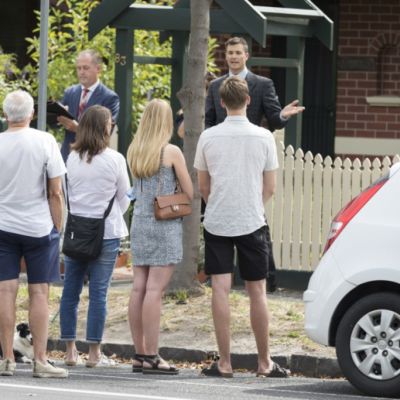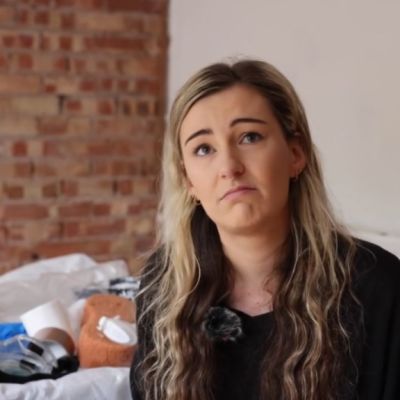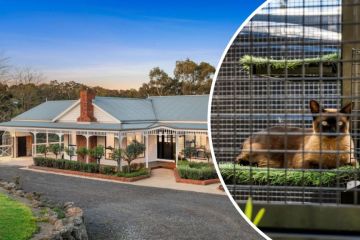What are the chances of buying a first home in 2025?
The path to owning a first home in 2025 is tipped to be a tightrope walk, with sky-high property prices on one side and mounting cost-of-living pressures on the other.
But for buyers ready to embrace compromise and strategy, a rare window of opportunity could open, experts say, thanks to new government incentives and a cooling market – at least for now.

Prices have been slowing, the federal government’s Help to Buy shared equity scheme is on its way and the low-deposit First Home Guarantee is available.
The reprieve may be short-lived, with interest rate cuts in the second quarter expected to reignite price growth – leaving first-home buyers grappling with creative ways to enter the market.
Trends such as rent-vesting, in which buyers purchase a property in an affordable area while continuing to rent closer to work or family, are gaining traction. At the same time, the “bank of mum and dad” is increasingly pivotal, with parents and even grandparents stepping in to support younger Australians.
Dr Nicola Powell, Domain’s chief of research and economics, says accessibility and affordability will remain the two Everest-sized hurdles for first home buyers.
However, with housing set to become a key battleground for the looming federal election, she believes 2025 could be an “enabler year”.
“The prediction that Adelaide and Brisbane are going to surpass the $1 million median mark for house prices (joining Sydney, Canberra and Melbourne) while not having enough affordable supply across our capitals are the main pain points,” she said.
“But my advice to first home buyers is to familiarise yourself with the incentives that exist and the ones coming into place. These could be a game-changer.
“Secondly, first home buyers need to be open-minded and ask themselves what elements they are willing to compromise on – whether this [is] having one bedroom less.”
Powell has also noticed more first home buyers rent-vesting, especially in Sydney.
“Those who approach the market strategically and embrace compromises, like choosing apartments or bridesmaid suburbs, are most likely to secure a foothold on the property ladder.”

Nerida Conisbee, chief economist at Ray White, believes 2025 could offer first-home buyers a rare window of opportunity for those ready to act quickly.
“The market will start soft, but rate cuts in the second quarter will likely reignite demand and drive prices higher,” she said.
Conisbee emphasised the importance of exploring bridesmaid suburbs – areas just outside high-demand markets that have collected significant price growth over the past year – and considering options such as co-buying.
“Even if it means starting small or compromising on location, getting in now is the best way to set yourself up for the long term,” she said.
Conisbee also encouraged buyers not to wait for the perfect time.
“The market never stands still, and people who buy sooner generally end up in a stronger position later,” she said.
Sally Tindall, data insights director at Canstar, said first-home buyers must also brace for ongoing cost-of-living pressures that could make saving for a deposit feel like an uphill battle.
“Our research shows that buyers are saving half of what they did just a year ago due to rising rents and other household expenses,” she said.
“We did a sample size of 1000 people saving for their first home and they were saving $724 a month towards the purchase of their home and when you consider property prices, it’s not much. When we asked the same question a year ago, a year before that they were saving $1605 a month.”
Tindall advises buyers to reassess their goals and take practical steps to stretch their budgets. “This could mean buying further out, starting with a smaller property, or even purchasing a renovator’s delight,” she said.
“It’s not about finding the perfect home right now – it’s about getting a toe on the ladder and working your way up over time.”
She also encourages buyers to explore less traditional paths, such as purchasing with friends or relatives, or opting for government schemes that reduce the upfront costs of buying.
“If you’re eligible for a low-deposit scheme or can get help from your family, it might be worth paying lenders mortgage insurance to secure your first home sooner,” she said.
While the challenges for first-home buyers in 2025 are significant, Tindall agrees that those who can navigate the landscape strategically will find opportunities.
“Even small adjustments to your expectations or plans can make a big difference,” she said. “This isn’t an easy market, but it’s not impossible either.
“The first thing I would say to prospective first home buyers is make 2025 the year you sit down and reassess your goals,” she said.
We recommend
States
Capital Cities
Capital Cities - Rentals
Popular Areas
Allhomes
More










